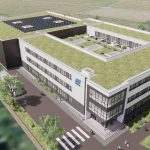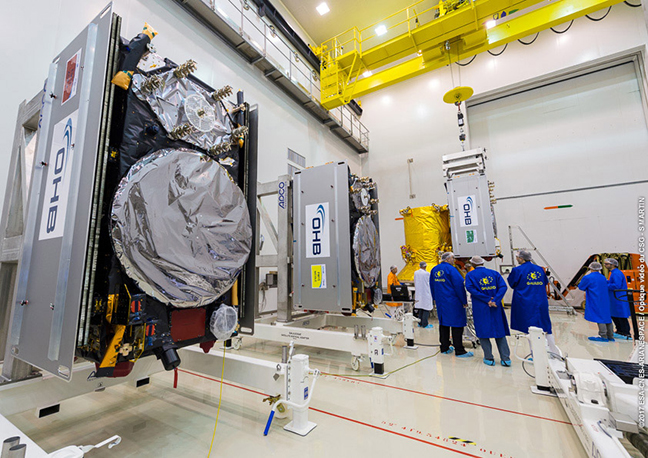Four of the latest set of Galileo navigation satellites will be launched on Ariane 6 rockets as the European Space Agency has announced it will become Arianespace’s first customer for Europe’s new vehicle.
The launches are scheduled between the end of 2020 and mid-2021, using two Ariane 62 rockets – the configuration of Europe’s next-generation launch vehicle that is best suited to haul the two 750-kilogram navigation satellites that operate in a 23,000-kilometer medium-Earth orbit.

Artist’s view of the configuration of Ariane 6 using two boosters (A62). Courtesy of ESA – David Ducros.
Signing the contract on behalf of the European Commission (EC) and the European Union (EU), ESA agreed to launch four Galileo navigation satellites two at a time on Ariane 6 rockets. But the ESA did note that Soyuz would serve as a backup option, as the contract includes the ability to rely on Soyuz if the Ariane 6 is not able to complete the mission.
Under development, Ariane 6 is Europe’s newest launcher, designed to extend guaranteed access to space for Europe at a competitive price. It will operate in two configurations, depending on customer needs: Ariane 62 is fitted with two strap-on boosters while Ariane 64 has four.
“Ariane 6 is not only in full development, but it will soon be put to use,” notes Daniel Neuenschwander, ESA’s Director of Space Transportation. “This contract is a key step in the upcoming ramp-up phase of Ariane 6.”
The Galileos have so far either been launched in pairs by Soyuz from French Guiana or in fours by Ariane 5.
A new Ariane 5 flight is scheduled for the end of this year, to add four more satellites to the 18-strong constellation already in orbit. This month saw the arrival of the first elements of the rocket in French Guiana, transported aboard the MN Colibri roll-on/roll-off ship.
The contract specifies the decision to use Ariane 62 is subject to the vehicle’s development schedule, with Soyuz available as an alternative. A final choice will be made at the end of 2018, two years before the first launch.
Galileo is Europe’s own satellite navigation system, providing an array of positioning, navigation and timing services to Europe and the world. A further eight Galileo “Batch 3” satellites were ordered last June, to supplement the 26 built so far.
In May, Inside GNSS reported on the official launching of Galileo Search and Rescue (SAR), signaling yet another milestone brought about by the Galileo satellite constellation. According to the European Global Navigation Satellite Systems Agency (GSA), among the many benefits SAR brings is a faster response time when every minute matters.






